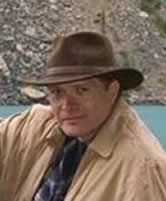Events
Organic Solid State Lighting
March 15, 2011 at 3pm/36-428
Paul E. Burrows
Reata Research

abstract:
Many scientific papers and presentations in the field of organic electronic materials have kicked off with bold statements implying a route to low cost, large area manufacturing. Organic solid state lighting has recently become feasible due to dramatic improvements in the efficiency and operating lifetime of organic light emitting devices (OLEDs) and, again, dramatic visions of efficient, large area organic lighting on plastic sheets akin to wallpaper fill the popular literature. These improvements have led to the widespread, if perhaps not yet profitable, exploitation of OLEDs in small area displays, particularly for handheld devices. Application to general lighting, however, presents unique challenges distinct from the displays industry. Organic solid state lighting indeed has advantages over other available technologies but simply applying display technology to lighting is probably not the way to go. This presentation will start from what is actually required to light a room, how much value a lighting product can command, and which problems therefore exist that still require research breakthroughs for their solution
bio:
Currently, Dr. Burrows consults on fundamental science, technology and policy for business and government in nanotechnology, molecular materials and energy through Reata Research in Chattaroy, Washington. His specialties include: organic materials and devices for SSL, thin film encapsulation, hybrid organic-inorganic semiconductor integration, 3D electronic devices, thin film deposition techniques for organic molecules and salts, and production/analysis of ultra-high purity organic materials. From 2000 to 2008, Paul served as Laboratory Fellow for Pacific Northwest National Laboratory where he managed a $5 million budget for the Nanoscience and Nanotechnology Initiative and worked with DOE and Next Generation Lighting Industry Alliance to define and build our national program in solid state lighting. Dr. Burrows has also led nanoscience research programs at numerous industry and academic institutions, including Princeton University, University of Southern California, and the Laboratory for Nonlinear Optics and Advanced Materials at the Riken Institute in Japan.






